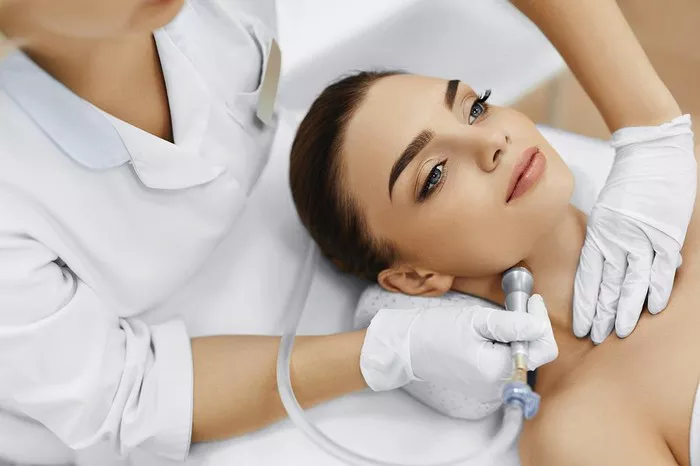Microdermabrasion is a popular cosmetic procedure known for its ability to rejuvenate the skin by exfoliating its top layer. While this non-invasive treatment offers various benefits, including improved skin texture and reduced signs of aging, one question frequently arises: Does microdermabrasion remove peach fuzz? Peach fuzz refers to the fine, nearly invisible hair that covers the face. In this article, we will explore the effects of microdermabrasion on peach fuzz and whether it is an effective method for hair removal.
Understanding Microdermabrasion
Microdermabrasion is a dermatological procedure that involves the use of a specialized device to exfoliate the outermost layer of the skin. This exfoliation is typically performed using tiny abrasive crystals or a diamond-tipped wand that is applied to the skin’s surface. The process removes dead skin cells, stimulating cell turnover and revealing smoother, fresher skin beneath. Microdermabrasion is often used to address a range of skin concerns, including:
Exfoliation: It removes dead skin cells, leaving the skin looking brighter and more youthful.
Fine Lines and Wrinkles: Microdermabrasion can reduce the appearance of fine lines and wrinkles, particularly those caused by sun damage or aging.
Acne and Acne Scars: The procedure can help improve acne-prone skin and reduce the visibility of acne scars.
Hyperpigmentation: It can help even out skin tone by reducing the appearance of dark spots and pigmentation irregularities.
Enlarged Pores: Microdermabrasion can minimize the appearance of enlarged pores by unclogging and refining them.
The Effects of Microdermabrasion on Peach Fuzz
While microdermabrasion is effective at exfoliating the skin and addressing various skin concerns, it does not target or remove peach fuzz. Here’s why:
Superficial Treatment: Microdermabrasion is a superficial treatment that primarily targets the stratum corneum, the outermost layer of the skin. Peach fuzz, or vellus hair, grows just below the skin’s surface, and microdermabrasion does not reach deep enough to affect hair follicles.
Hair Removal Methods: Microdermabrasion is not designed as a hair removal method. Instead, it focuses on improving the skin’s texture and appearance. To remove peach fuzz or other unwanted facial hair, other techniques such as waxing, threading, or laser hair removal are more appropriate.
Hair Growth Stimulation: Some individuals may be concerned that microdermabrasion could stimulate hair growth due to increased blood flow to the treated area. However, there is no scientific evidence to support this claim. Microdermabrasion does not alter hair growth patterns or stimulate hair follicles.
Alternatives for Peach Fuzz Removal
If you are looking to remove peach fuzz from your face, there are several effective methods to consider:
Waxing: Waxing is a common method for removing facial hair, including peach fuzz. It provides longer-lasting results compared to shaving and can leave the skin smooth.
Threading: Threading is a technique that uses twisted cotton thread to remove unwanted hair. It is known for its precision and ability to remove fine hair effectively.
Laser Hair Removal: Laser hair removal is a semi-permanent method that uses targeted laser energy to destroy hair follicles, reducing hair growth. It is effective for both peach fuzz and coarser hair.
Dermaplaning: Dermaplaning is a procedure specifically designed to remove peach fuzz and dead skin cells. A sterile surgical scalpel is used to gently scrape the skin’s surface, leaving it smooth and hair-free.
At-Home Hair Removal Devices: There are various at-home hair removal devices, such as epilators and electric razors, that can be used to remove peach fuzz in the comfort of your own home.
Conclusion
Microdermabrasion is a cosmetic procedure known for its ability to improve skin texture and address various skin concerns. However, it is not designed for the removal of peach fuzz or facial hair. Peach fuzz, being fine and superficial, requires different methods such as waxing, threading, laser hair removal, or dermaplaning for effective removal. When considering any hair removal method, it is essential to consult with a licensed dermatologist or esthetician to determine the most suitable and safe option for your specific needs and skin type. While microdermabrasion offers many benefits for skin rejuvenation, it is not a solution for hair removal and should be chosen for its intended purposes.


